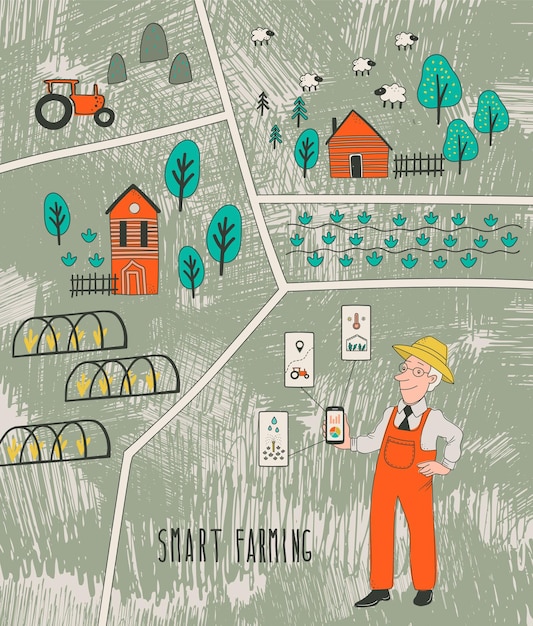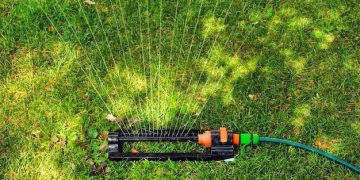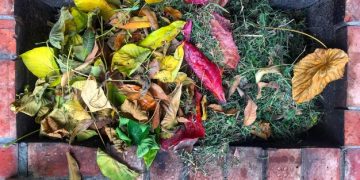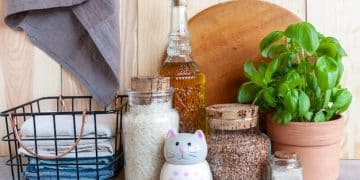Sustainable Gardening for Beginners: Grow Food in 3 Months

Sustainable gardening for beginners involves cultivating a garden using eco-friendly practices to grow your own food within three months, focusing on soil health, water conservation, and natural pest control.
Embarking on a journey towards self-sufficiency and environmental consciousness? Sustainable gardening for beginners: grow your own food in 3 months is not just a trend; it’s a practical skill that empowers you to nourish yourself while nurturing the planet.
Understanding Sustainable Gardening
Sustainable gardening goes beyond just planting seeds; it’s an integrated approach that respects the environment and promotes biodiversity. It’s about creating a closed-loop system where waste is minimized, resources are conserved, and the garden ecosystem thrives naturally.
This method focuses on long-term health rather than short-term gains, ensuring that your garden remains productive and beneficial for years to come. By adopting sustainable practices, you contribute to a healthier planet while enjoying fresh, homegrown produce.
Key Principles of Sustainable Gardening
Adhering to a few key principles can transform your gardening approach into a sustainable one. These practices are designed to minimize environmental impact and maximize the garden’s natural productivity.
- Soil Health: Prioritize building healthy soil through composting and avoiding synthetic fertilizers.
- Water Conservation: Utilize techniques like mulching and rainwater harvesting to reduce water usage.
- Pest and Disease Management: Opt for natural methods such as companion planting and beneficial insects.
- Biodiversity: Encourage a variety of plants and beneficial wildlife to create a balanced ecosystem.
By focusing on these elements, you’ll not only grow healthy food but also create a thriving, self-sustaining garden.
Planning Your Sustainable Garden
Effective planning is crucial for a successful and sustainable garden. Consider the space you have available, the climate in your area, and the types of plants that thrive in your local environment.
Starting with a solid plan ensures that your efforts are focused and efficient, setting the stage for a bountiful harvest within three months. Evaluate your resources and map out a strategy that aligns with your goals and capabilities.

Assessing Your Space and Resources
Before you start digging, take stock of your available space, sunlight, and water sources. These factors will influence the type of garden you can create and the plants you can grow.
- Sunlight: Determine how many hours of sunlight your garden receives daily.
- Soil Type: Analyze your soil’s composition to identify any necessary amendments.
- Water Access: Ensure you have a reliable source of water, such as a rainwater harvesting system or a well.
- Space Limitations: Consider vertical gardening or raised beds if you have limited space.
Understanding your resources helps you make informed decisions about plant selection and garden layout.
Preparing the Soil Sustainably
Healthy soil is the foundation of any successful garden, and sustainable gardening emphasizes natural methods to improve soil quality. Composting, cover cropping, and avoiding synthetic fertilizers are essential practices.
By nourishing the soil, you provide the nutrients plants need to thrive, reduce the need for external inputs, and create a resilient garden ecosystem. This approach not only benefits your plants but also enhances soil health over time.
Composting: Nature’s Fertilizer
Composting is a simple yet powerful way to recycle organic waste into nutrient-rich soil. Start a compost bin using kitchen scraps, yard waste, and other biodegradable materials.
Regularly turning and mixing the compost pile accelerates decomposition, creating a valuable soil amendment that improves soil structure, water retention, and nutrient content.
Benefits of Cover Crops
Cover crops are plants grown specifically to improve soil health. They can prevent erosion, suppress weeds, and add nutrients to the soil.
Planting cover crops like clover or buckwheat between growing seasons can significantly enhance soil fertility, reducing the need for synthetic fertilizers and creating a healthier garden environment.
Preparing the soil sustainably is critical for creating a thriving garden that supports plant growth and minimizes environmental impact.
Choosing the Right Plants
Selecting the right plants is key to a successful and sustainable garden. Opt for native or locally adapted varieties that are well-suited to your climate and soil conditions.
Consider plants that offer multiple benefits, such as herbs that attract pollinators or vegetables that provide continuous harvests. By choosing wisely, you can create a diverse and productive garden that thrives with minimal intervention.
Top Vegetables for a 3-Month Harvest
Certain vegetables are known for their quick growth and high yields, making them ideal for a three-month harvest. These include:
- Lettuce: Fast-growing and easy to harvest in just a few weeks.
- Radishes: Ready to harvest in as little as 30 days.
- Spinach: Provides multiple harvests of nutritious leaves.
- Bush Beans: Produces abundant beans in a short amount of time.
Planting these vegetables ensures a steady supply of fresh produce throughout the growing season.

The Role of Companion Planting
Companion planting involves growing different plants together to benefit each other. Some plants repel pests, while others attract beneficial insects or improve soil conditions.
For example, planting basil near tomatoes can deter pests, while marigolds can repel nematodes in the soil. Companion planting enhances the health and productivity of your garden while reducing the need for chemical interventions.
Watering and Irrigation Techniques
Conserving water is a fundamental aspect of sustainable gardening. Utilizing efficient watering techniques ensures that plants receive the moisture they need without wasting this precious resource.
Drip irrigation, soaker hoses, and rainwater harvesting are effective methods for minimizing water usage and promoting healthy plant growth. By implementing these strategies, you can reduce your environmental footprint and create a drought-resistant garden.
Efficient Watering Methods
Choosing the right watering method can significantly impact water conservation efforts. Consider these options:
- Drip Irrigation: Delivers water directly to plant roots, minimizing evaporation and runoff.
- Soaker Hoses: Provides a slow, steady stream of water, reducing water waste.
- Hand Watering: Allows for targeted watering, ensuring each plant receives the right amount of moisture.
Selecting the most appropriate method for your garden’s needs helps conserve water and promote healthy growth.
Harvesting Rainwater Sustainably
Rainwater harvesting is an eco-friendly way to collect and store water for use in your garden. Install rain barrels or cisterns to capture rainwater from rooftops and gutters.
This collected water can then be used to irrigate your garden, reducing your reliance on municipal water sources and lowering your water bill.
Natural Pest and Disease Control
Sustainable gardening prioritizes natural methods for managing pests and diseases. Avoid using synthetic pesticides and herbicides, which can harm beneficial insects and pollute the environment.
Instead, focus on preventative measures, such as maintaining healthy soil, promoting biodiversity, and using natural pest control solutions. These strategies create a balanced garden ecosystem that is more resistant to pests and diseases.
Attracting Beneficial Insects
Beneficial insects, such as ladybugs and lacewings, prey on common garden pests. Attract these insects by planting flowers that provide nectar and pollen.
Creating a habitat that supports beneficial insects helps naturally control pest populations, reducing the need for chemical interventions.
Using Natural Pest Repellents
Several natural substances can repel pests without harming beneficial insects or the environment. Consider using:
- Neem Oil: A broad-spectrum insecticide that is effective against many common pests.
- Garlic Spray: Repels aphids, whiteflies, and other insects.
- Diatomaceous Earth: A natural powder that kills insects by dehydrating them.
Employing these natural repellents helps keep your garden healthy and pest-free without relying on harmful chemicals.
| Key Aspect | Brief Description |
|---|---|
| 🌱 Soil Preparation | Use compost and avoid synthetic fertilizers to nourish the soil. |
| 💧 Water Conservation | Implement drip irrigation and harvest rainwater. |
| 🐛 Pest Control | Attract beneficial insects and use natural repellents like neem oil. |
| 🌿 Plant Selection | Choose fast-growing vegetables and use companion planting. |
Frequently Asked Questions
▼
Sustainable gardening is an eco-friendly approach that focuses on minimizing environmental impact by using natural methods for soil health, water conservation, and pest control.
▼
Improve soil health by using compost, cover crops, and avoiding synthetic fertilizers. These practices enhance soil structure and nutrient content, creating a healthy environment for plants.
▼
Quick-harvest vegetables include lettuce, radishes, spinach, and bush beans. These plants grow rapidly and provide a harvest in as little as 30 days, making them ideal for beginners.
▼
Conserve water by using drip irrigation, soaker hoses, and rainwater harvesting. Mulching also helps retain soil moisture and reduces water evaporation, promoting efficient water usage.
▼
Natural pest control methods include attracting beneficial insects, using neem oil, garlic spray, and diatomaceous earth. Companion planting also helps deter pests by growing plants that repel insects.
Conclusion
Embarking on a sustainable gardening journey not only provides you with fresh, homegrown produce but also contributes to a healthier planet. By following these beginner’s tips, you can create a thriving garden in just three months, embracing environmentally friendly practices every step of the way.





